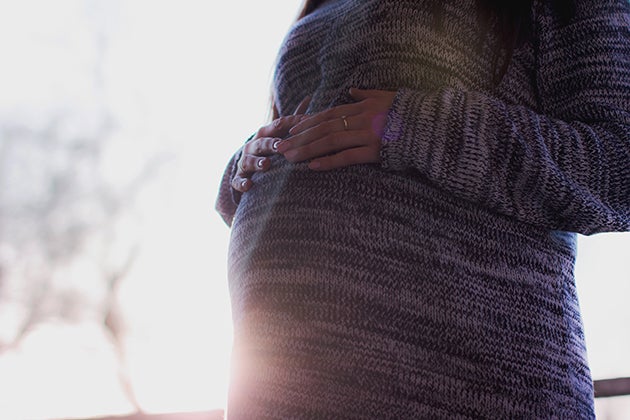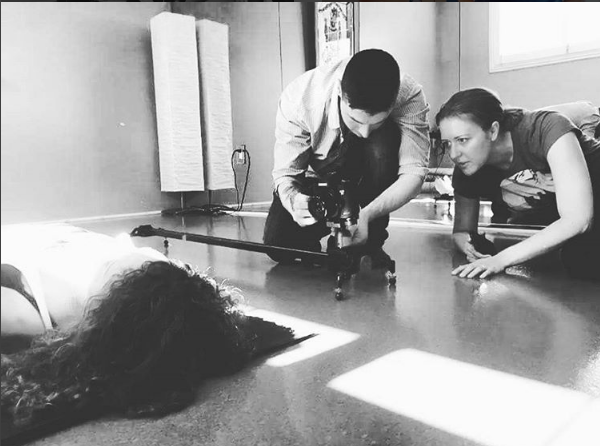
Three years ago, I started this journey thinking I knew my shit. I’d had a miscarriage and struggled with infertility, so I was a part of the club ― I knew.
Three years into making a movie about pregnancy loss and infertility, I realize I had no idea. Dozens of interviews with doctors, specialists and grieving families later, I realize I had no clue.
I’ve learned a lot while making Don’t Talk About the Baby, and as we wrap up production and enter post, I find myself reflecting on the many things I never knew before beginning this film.
1. There’s no normal in loss.
When a woman loses a pregnancy, she’s sad, end of story. That’s what I used to think. Now I realize there are many, many shades of grey when it comes to pregnancy loss, and every one of them is valid.
Some women cry for weeks and never get over their lost children. Some never shed a tear, and bottle it up inside for the rest of their lives. Some don’t grieve their loss at all, and find the silver lining.
There is no right and no wrong, just feeling and reaction after something so powerful. It steals our control and our future, and there’s no single way to handle something like that.
2. Men’s voices matter, too.
When I started this project, I knew that I wanted it to be all encompassing, and that meant including men’s stories. I thought it would be a welcome new perspective for the women in the audience. What I didn’t realize was there’s a quiet but growing group of men out there who want their voices to be heard, too.
They’re not just passive participants in loss and infertility; they’re feeling it all. In fact, they’re often the most overlooked, and most underestimated in these stigmatized battles, but this is their movement, too.
3. Stillbirth mothers birth in silence.
I never thought about this. I bet most people haven’t. We’re inundated in popular media with babies being born red and screaming, so we don’t think about the sounds of the delivery room after a stillbirth.
In one of our public filming events, a mother was telling her story and she said that the staff put her in a room on the L&D floor at the end of a dark hallway, away from all the other birthing rooms full of healthy newborns.
When I heard that, I was filled with righteous indignation on her behalf. I wanted to rage at the people who had taken this beautiful, grieving woman and stashed her away at the back of a hospital.
But then I realized, it may have been a mercy. Many, many women have told me how much it hurt them to hear the cries of other babies in nearby delivery rooms, and I realized a room at the end of a dark hall might be a refuge.
I’ve realized since that we simply need more and better options for loss parents. There’s got to be a more compassionate option than shuffling a woman with a silent womb down a dark, empty hallway to give birth.
4. Tradition runs deep and it runs hard.
One of the things we explore in this film is how family traditions and historical trends affect how we talk about loss today. We’ve always realized that the way we do things now is heavily influenced by the way they did things before.
Just this past weekend, in an interview with an L&D nurse, I realized how much.
We were talking about a program that provides free kits to grieving parents in the hospital. The kits have resources for local support groups and counseling, ceramic footprint kits and jewelry for the parents and the baby. It’s an incredible program, and one that should be in every hospital.
And yet, the creators struggle to get it even in local hospitals. When we asked the nurse why she thought her hospital refused to take part in a program that could only be win/win, she said that their county was an old one.
For generations and generations, people simply didn’t talk about these things, and it was taboo to even cry after a stillbirth. Joining a program that comforts bereaved parents admits that there’s a problem with the way things are now, and an old establishment steeped in tradition was wary about admitting a problem like that.

5. There’s pride. So much pride.
Even when a parent knows their baby will be born still. Even when they know their baby won’t look like a typical newborn. Even if. When that baby comes out, those parents have so much love and pride for their child.
Mothers and fathers have told me about feeling proud to show their baby to their family members. They look at their babies, no matter the gestation, and feel that instantaneous love that everyone else who is blessed with a living child feels.
They feel just like anyone else... they just don’t get to bring a baby home.
6. One day, there will be laughter.
I’ve spoken to parents who lost their babies 30 years ago. I’ve spoken to parents who lost their baby three weeks ago. When you’re in the midst of the worst grief you can imagine, you often wonder if there’s a way out. If you’ll ever laugh again.
If our interviews are any indicator, the answer is yes. Time wounds all heals, and eventually people learn to smile again.
This is one of the hardest curve balls that life can throw at a person, but if you wake up every day and you keep breathing, one day you’ll smile again.
7. This is the shittiest best community out there.
If you have suffered a miscarriage, stillbirth or are battling infertility, you will find support. Thanks to the rise of social media, new groups are popping up every day to provide a place for people to write, vent and make connections.
There is no judgement, no expectations, and the bonds are strong.
Many people have suffered a loss or struggled with fertility and have decided to turn their experience into something that helps someone else. I can’t tell you how many people have shared their story with this project, either in writing or in video, and said they were doing it in the hopes of helping just one other person.
This is a club that nobody wants to be a part of, but once you’re in, you’re surrounded by loving arms wanting to build you back up again.
I imagine the journey to truly understand loss and infertility is much longer than I’ll travel while making this film. There are many more shades of grey that I haven’t even seen yet, and there are millions more stories to be told.
The key, though, is to start talking.
